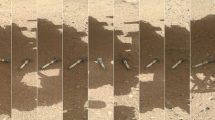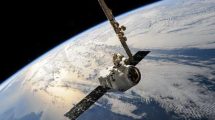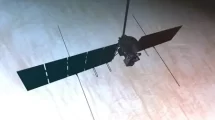 ESA and Airbus Defence and Space have signed a €177 million contract to develop the Jason-CS / Sentinel-6A Satellite mission for Europe’s Copernicus programme.
ESA and Airbus Defence and Space have signed a €177 million contract to develop the Jason-CS / Sentinel-6A Satellite mission for Europe’s Copernicus programme.
The mission will use a radar altimeter to observe changes in sea-surface topography with centimetre precision, providing insights into global sea levels, the speed and direction of ocean currents and ocean heat storage.
These continuous measurements are vital for modelling the oceans and predicting rises in sea levels. With the signing of today’s contract, the Satellite is foreseen to be launched in 2020.
Jason-CS / Sentinel-6 will ensure the continuation of ocean surface topography measurements from its Jason-3 predecessor, planned for launch this summer.
The satellite will also carry on measurements from the CryoSat Satellite, which has been in orbit since 2010, and the Sentinel-3 mission.
“Jason-CS / Sentinel-6 will be the reference mission to continue the measurements for sea-level rise. These measurements are crucial to our understanding of the effects that global warming has on our oceans,” said Volker Liebig, Director of ESA’s Earth Observation programmes.
The contract includes an option for a sister Satellite, Sentinel-6B. This can be activated later this year after the completion of the programme subscription at Eumetsat, one of the programme partners.
Signing on behalf of Airbus Defence and Space was Dr Michael Menking, Head of Earth Observation, Navigation & Science in the company’s Space Systems division.
“The programme underscores Airbus Defence and Space’s outstanding expertise in the field of Earth observation Satellites,” he said.
The signing took place on the first day of the 36th International Symposium on Remote Sensing of Environment in Berlin, Germany, in the presence of Germany’s State Secretary for Transport, Rainer Bomba, Eumetsat Director General, Alain Ratier, and Astrid Christina Koch from the European Commission.
The mission is a cooperation between ESA, the European Commission and Eumetsat. ESA’s Ministerial Council in December 2014 established full ESA funding for the first Satellite.
The US is also a key partner in the mission, with NASA and NOAA playing a role in the launch, US operations and provision of the radiometer.












Add Comment